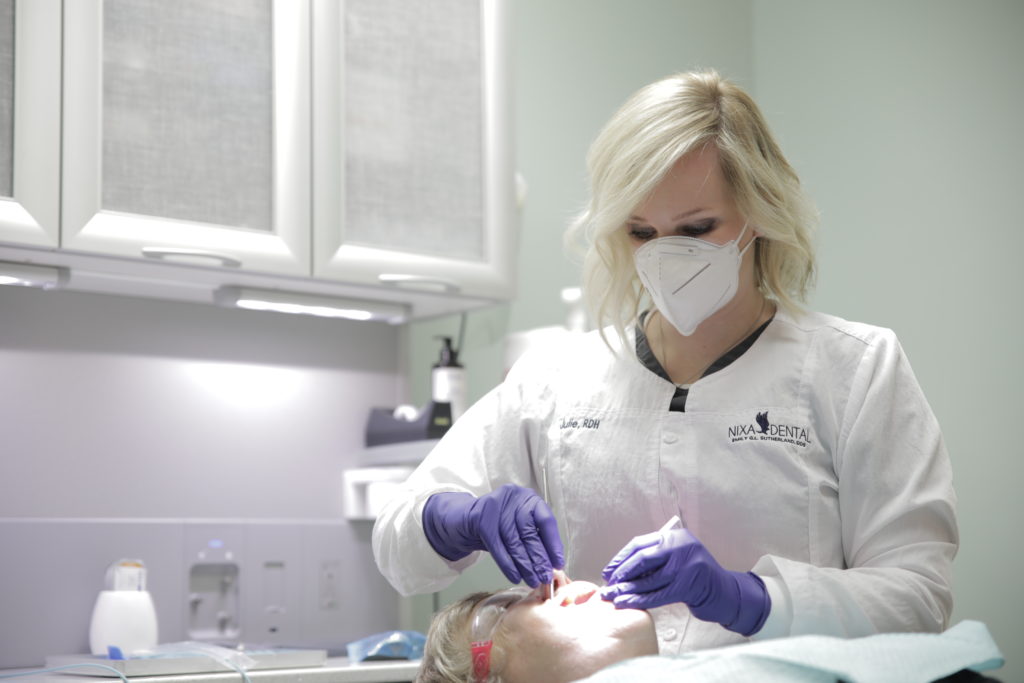DENTAL Crowns
Available in a single visit! No temporaries or goopy impressions!
WHAT ARE DENTAL Crowns
A crown is a cap for a damaged tooth. It is needed when a tooth has a large amount of decay (cavities), fracture lines, root canal treatment, or decay around an existing crown.
You might need a crown if you have a cavity that’s too big for a filling. Crowns replace large areas of missing tooth material, and hold together a tooth that shows signs of breaking (due to fractures or symptoms). They are a great way to restore the shape of a damaged tooth, and protect it from future decay.
Typically our crowns are one of 4 materials:
- Ceramic. Very strong and good color matching. Same-day CEREC crowns!
- Porcelain. Beautiful and very strong due to the latest technology.
- Zirconia. Super strong, can be made very thin, tooth colored, great for back teeth.
- Gold. On back teeth that bite against natural teeth, gold can be very good for patients who have clenching and grinding habits. Gold crowns cannot be done in one day.
Our most popular crown is our same-day CEREC ceramic crown. CEREC stands for Chairside Economical Restoration of Esthetic Ceramics, and is the latest technology in crowns. Using computer-aided design and manufacturing (CAD/CAM), we can produce a custom-fitted crown for you in a same-day procedure!
Crowns can last anywhere from 5 to 15 years, with proper care. We will show you tips on how to make your crown last as long as possible.
Inlays and Onlays

When a tooth has a moderate to large amount of decay, but has 3 to 4 walls that are free of decay and thick enough to support biting forces, an inlay can be used instead of a full crown. If the tooth has 1 to 2 walls that are decay-free and thick enough, an onlay can be used to cover the affected walls and cusp tips instead of a full crown. Typically, these are made of porcelain or porcelain/zirconia-infused composite hybrid material and are made in 1 visit in the office.
What To Expect At Your Crown Appointment
First, the tooth is completely numbed and all decay is removed. If too much of the core of the tooth is missing, it is replaced with a filling called a core build-up. A thin outer shell of the tooth is reduced so that a new porcelain shell can cover the tooth without adding to its size.
The prepared tooth is then digitally scanned with a state-of-the-art, highly-accurate video scanner. The image is then integrated into the latest software, and we custom design a crown to perfectly fit the prepared tooth as well as mimic the look and function of the surrounding teeth. The design is then transferred to our in-office crown mill where the crown is made, and then sintered.
The fit of the crown is verified to be exact with an x-ray, prior to cementing. Then the crown is permanently cemented, a final x-ray is taken to show complete seating, and the cement is cleaned up. Your bite is checked and adjusted if needed until it feels good to you.


